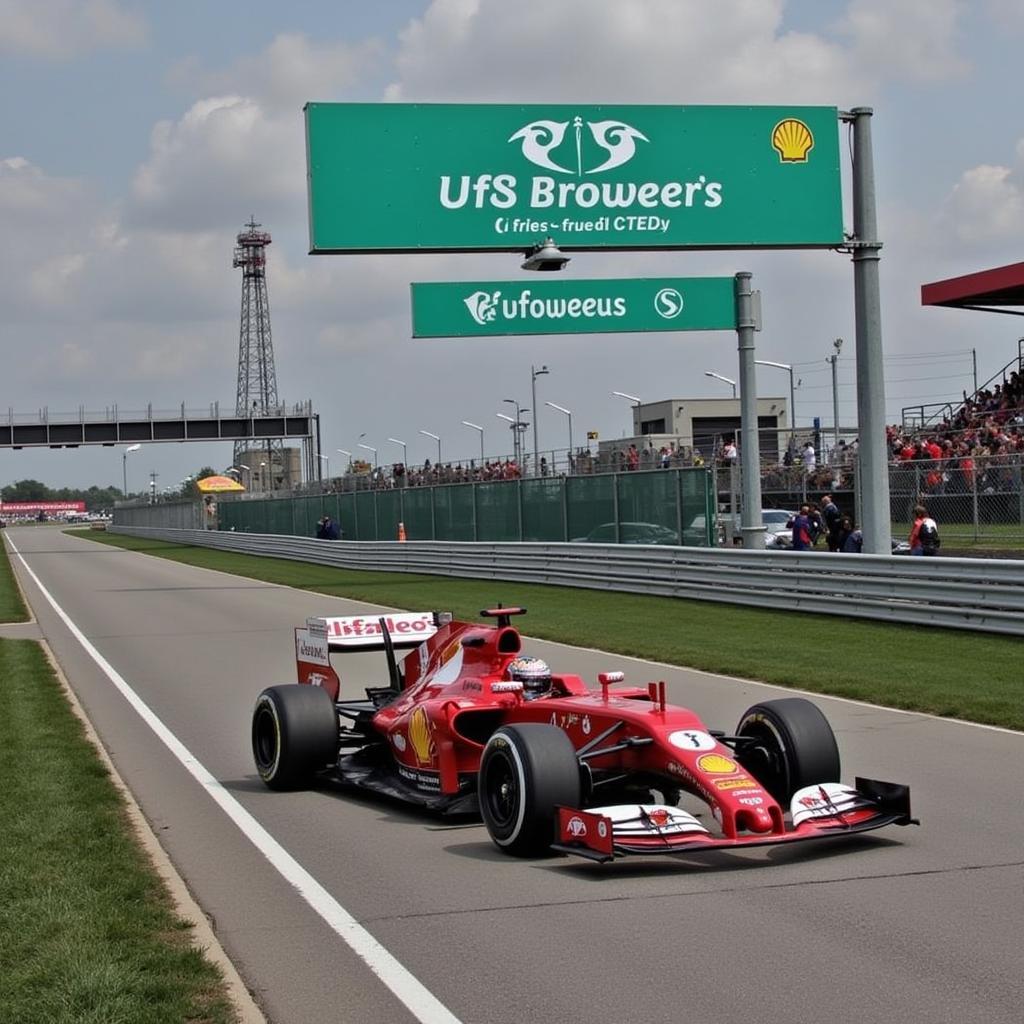F1 24 Canada Setup: Mastering the Circuit Gilles Villeneuve
October 10, 2024The Canadian Grand Prix, held at the iconic Circuit Gilles Villeneuve, is known for its high-speed straights and challenging chicanes, demanding a unique F1 24 setup for optimal performance. This guide will provide you with a comprehensive understanding of the track’s characteristics and the key setup adjustments needed to conquer this demanding circuit.
Taming the Wall of Champions: Key Setup Considerations
Circuit Gilles Villeneuve presents a unique set of challenges that require a delicate balance between straight-line speed and cornering agility.
- Aerodynamic Efficiency: The long straights demand minimal drag for maximum speed, while the chicanes require sufficient downforce for stability and traction.
- Braking Performance: Heavy braking zones, especially into the hairpin at Turn 10, necessitate a strong and responsive braking system.
- Ride Height: A lower ride height can improve aerodynamic performance, but it can also make the car more susceptible to bottoming out on the curbs.
- Suspension Setup: A stiffer suspension setup can enhance responsiveness, but it can also compromise traction on the bumpy track surface.
 F1 car navigating a chicane at Circuit Gilles Villeneuve, demonstrating the importance of setup for stability and traction.
F1 car navigating a chicane at Circuit Gilles Villeneuve, demonstrating the importance of setup for stability and traction.
Fine-Tuning for Speed: Recommended Setup Adjustments
To unlock the full potential of your F1 24 car at Circuit Gilles Villeneuve, consider these specific setup recommendations:
Aerodynamics:
- Front Wing: Opt for a lower angle (around 5-7) to reduce drag on the straights.
- Rear Wing: A medium-high angle (around 8-10) provides a good balance between straight-line speed and downforce for the chicanes.
Transmission:
- Differential: A slightly looser off-throttle differential (around 50%) can improve rotation in the slow corners.
Suspension Geometry:
- Camber: Run slightly lower camber (-2.5 front, -1.5 rear) to minimize drag on the straights.
- Toe: A touch of front toe-out (0.05) can improve turn-in responsiveness.
Brakes:
- Brake Pressure: A higher brake pressure (around 80%) provides more stopping power for the heavy braking zones.
- Brake Bias: A slightly forward bias (56-57%) can improve braking stability.
Tires:
- Tire Pressure: Aim for slightly lower tire pressures (23.0 psi front, 21.0 psi rear) to maximize grip on the track surface.
Mastering the Circuit: Driving Tips for Success
Beyond a well-tuned setup, mastering Circuit Gilles Villeneuve requires precision and finesse:
- Braking Points: Be patient on the brakes and utilize trail braking to maintain momentum through the chicanes.
- Curb Usage: While aggressive curb-riding can be tempting, be mindful of the bumps and maintain car control.
- Fuel Management: The long straights can be demanding on fuel consumption, so practice fuel-saving techniques.
Conclusion
Conquering the Circuit Gilles Villeneuve in F1 24 demands a carefully crafted setup that balances speed and agility. By implementing the adjustments outlined in this guide, you’ll be well-equipped to tackle the challenging chicanes and blast down the straights, pushing for the checkered flag at the Canadian Grand Prix.
Need help perfecting your F1 24 Canada Setup? Contact us at Phone Number: 0915117113, Email: [email protected] Or visit our address: To 3 Kp Binh An, Phu Thuong, Viet Nam, Binh Phuoc 830000, Viet Nam. Our customer support team is available 24/7.